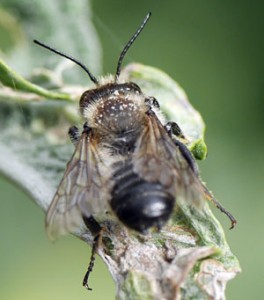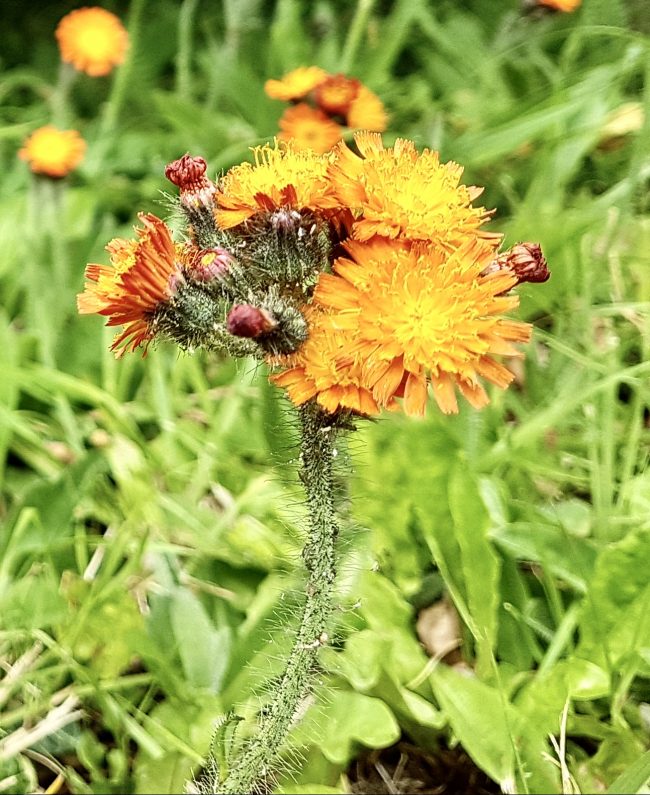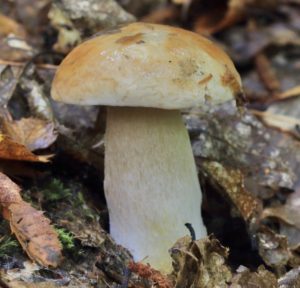woodlands web updates : 24

Electric bees ?
Both bumblebees and flowers carry an electric charge. Flowers have a weak negative charge, whilst the bees have a positive charge. The attraction between these two opposing electric fields may help the bees sense flowers. The electric charge of a bee may even stimulate a flower to release a burst of scent, aka volatile organic compounds. This was true for petunias, but not snapdragons. When a bee has visited a flower, the negative charge is briefly lost - maybe a signal to tell other bbees not to visit?
Other work by Bristol University has indicated that synthetic fertilisers and pesticide can interfere with a flower’s electric charge for some time after spraying, and that this can modify the foraging of bumblebees.
"Black bees"
The black bee, Apis mellifera mellifera, faces a number of threats like the domestic honey bee. It is also known as the European Dark Bee or the Black German Bee. It has been present since the retreat of the last Ice Age, but its distribution has become restricted as a result of habitat loss, parasitism by Varroa mites and viruses.
The black bee can be distinguished from other honey bees by its stocky body and sparse abdominal hair (which is brown), and overall dark coloration - so they appear black or dark brown.
Recent research (using DNA analysis) has shown that black honeybees can be found in many locations in Ireland and are not extinct, as previously suggested Black bees are noted for their longevity and hardiness (ability to cope with winter temperatures); it is possible that if winters become shorter / milder that this change may not favour black bees.
Weird weeds?
It seems that our gardens may be home to ‘new’ or unusual species of plants. The Royal Horticultural Society would like gardeners to report on interesting ‘weeds’ that might find as they could be rare plants or plants growing in unusual places / areas. You are asked to take photographs of anything that you find interesting, and upload the images to iNaturalist.

Reporting on unusual plants is not the only thing that the RHS is interested in. There are other garden projects that one can contribute to, for example, reporting sightings of garden pests such as the berberis sawfly, cellar slug, hemerocallis gall midge, lily beetle, rosemary beetle and spittlebug.
Mycorrhizal networks.
 A common mycorrhizal network (CMN) is when fungal hyphae connect the roots of many plants (either of the same or different species) below ground. They have attracted considerable attention in recent times (woodland wide webs), with claims, for example, that resources are transferred through CMNs to increase seedling performance and mature trees send resources / defence signals to offspring etc. However, a recent report in Nature has suggested that there is a ‘bias’ towards citing the positive effects of CMNs and that, to date, knowledge of common mycorrhizal networks is limited.
A common mycorrhizal network (CMN) is when fungal hyphae connect the roots of many plants (either of the same or different species) below ground. They have attracted considerable attention in recent times (woodland wide webs), with claims, for example, that resources are transferred through CMNs to increase seedling performance and mature trees send resources / defence signals to offspring etc. However, a recent report in Nature has suggested that there is a ‘bias’ towards citing the positive effects of CMNs and that, to date, knowledge of common mycorrhizal networks is limited.
Comments are closed for this post.
